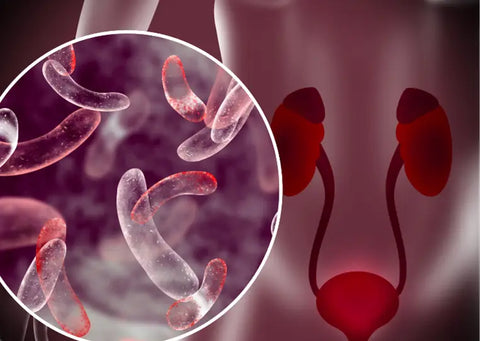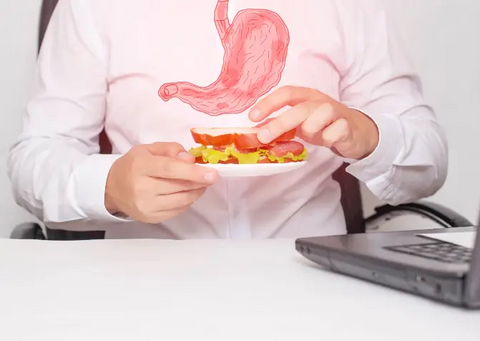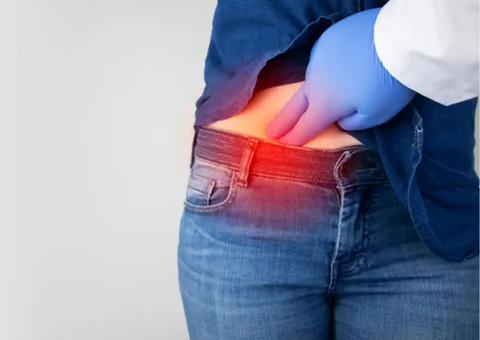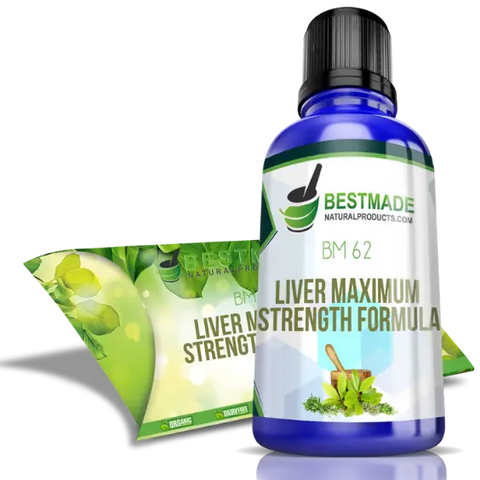
Exploring Abdominal Pain: Understanding Types and Root Causes
Abdominal pain is a common experience, ranging from mild annoyance to severe discomfort that can disrupt our daily lives. This blog explores the intricacies of abdominal pain and its underlying causes.
Abdominal pain is not merely an inconvenience; it serves as a signal from our bodies that something may be wrong internally. Understanding it is similar to deciphering a coded message your body uses to communicate with you. The more knowledge you have about abdominal pain, the better equipped you are to respond effectively.
BM 53 provides natural support for lower right-sided abdominal pain, convulsive pain, feelings of fear, and acute and chronic inflammation of the organs located on the right side of the abdomen. Useful for right-sided abdominal pain with no specific cause. It may help with appendix inflammation.
In this blog, we will comprehensively explore abdominal pain, categorizing it into distinct types to aid in identifying the source of your discomfort. Is it a cramp-like sensation, a sharp pain, or a persistent ache? Each type carries valuable information about the nature of the issue within.
However, our journey does not end with recognizing the pain itself; we will also dive into the underlying causes of abdominal discomfort. This will include a discussion of digestive problems, organ-related issues, and infections, shedding light on the potential sources of your discomfort.
BM 54 provides natural support for lower left-sided abdominal pain, including convulsive pain, feelings of fear, and acute and chronic inflammation of the organs located on the left side of the abdomen. It may help your body to deal with renal calculi, intestinal colic, and inflammation of the left ovary.
Different Types of Abdominal Pain
To begin, we'll demystify the complexities of abdominal pain by categorizing it into different types. You might be wondering about the significance of understanding these types. The reason is quite straightforward: it facilitates effective communication between you and your healthcare provider, aiding in diagnosing your abdominal discomfort. Think of it as assembling a puzzle; each type of pain represents a unique piece. Recognizing the shape of the piece simplifies the process of putting the puzzle together.
1. Cramp-like Pain:
- This abdominal discomfort often resembles a sensation of your stomach contracting or twisting.
- It can be likened to the discomfort experienced during menstrual periods or after indulging in greasy, heavy meals.
- Typically, it arises from muscle contractions in your digestive tract and may be associated with conditions such as irritable bowel syndrome (IBS).

2. Sharp Pain:
- Sharp abdominal pain manifests as a sudden, intense jab or stabbing feeling in your belly.
- Imagine the sharp pain you might feel if you accidentally bumped into a sharp corner of furniture.
- The causes of this type of pain can vary widely, from gas or muscle spasms to more serious conditions like kidney stones or appendicitis.
- Dull abdominal pain is characterized by a persistent, lingering ache that doesn't subside quickly.
- Think of it as similar to the discomfort that lingers after overexertion or a minor injury.
- It can be linked to conditions such as constipation, indigestion, or ongoing inflammation within the digestive organs.
- Burning abdominal pain presents as a sensation of heat or fire within your belly.
- It's reminiscent of the burning sensation experienced during heartburn after consuming spicy foods or in cases of acid reflux.
- Conditions such as gastritis or gastroesophageal reflux disease (GERD) can contribute to this type of discomfort.
Understanding these diverse types of abdominal pain is instrumental because it enables you and your healthcare provider to narrow down potential causes and identify the most appropriate solutions for your discomfort.
BM 86 may help with colic, indigestion, nausea, vomiting, diarrhea, fever, flatulence, and a greatly distended abdomen.
Common Causes of Abdominal Pain
In this section, we will discuss the origins of abdominal pain, aiming to demystify the complexities that can lead to discomfort in our midsection. Abdominal pain can result from various factors. To enhance clarity, we will categorize these factors into distinct groups:
- Digestive Issues: Diet plays a significant role in our abdominal well-being. Overindulgence in greasy or spicy foods can trigger indigestion, manifesting as discomfort. Additionally, when the digestive tract encounters challenges, such as constipation, it may lead to a persistent, dull ache.

- Organ-Related Problems: Our internal organs are key players in abdominal health. Should issues arise, sharp pain may ensue. For instance, gallbladder stones or liver ailments can contribute to such discomfort. Similarly, kidney problems, including stones or infections, may cause lower back pain radiating to the front.
- Infections: Infections like urinary tract infections (UTIs) or appendicitis are potential culprits behind abdominal pain. UTIs often induce a burning sensation, while appendicitis typically commences as a dull ache near the belly button that intensifies over time.

- Other Medical Conditions: Certain medical conditions, such as endometriosis (affecting the uterus) or fibromyalgia (impacting muscles and soft tissues), can also be associated with abdominal discomfort.
Understanding these distinct categories equips us with valuable knowledge to pinpoint potential causes when our abdominal region becomes troublesome. By exploring each category, we gain insight into the origins of abdominal pain, empowering us to comprehend our own bodies and their signals better.
Gastrointestinal Causes
Now, let's closely examine specific contributors to abdominal discomfort, particularly those tied to our digestive system.
- Gastritis: Gastritis resembles an irritated stomach lining, often arising from excessive alcohol consumption or specific medications. It can result in a burning or gnawing pain in the upper abdomen. This condition is rather common, affecting millions of individuals annually. Fortunately, it can often be effectively managed through lifestyle modifications and medications.

- Irritable Bowel Syndrome (IBS): IBS can be likened to a finicky digestive system. It presents with symptoms like cramp-like pain, bloating, and alterations in bowel habits. This condition is widespread, with millions worldwide grappling with it. Although not life-threatening, it can significantly impact one's quality of life. Learning about personal triggers and collaborating with a healthcare provider can help mitigate its symptoms.

- Gastroenteritis: Familiarly known as the stomach flu, gastroenteritis can give rise to abdominal pain, diarrhea, and vomiting. Typically instigated by viral or bacterial infections, this condition can be quite uncomfortable. Millions of cases are reported annually, primarily affecting children. Adequate hydration is of utmost importance when managing gastroenteritis, as it often follows a relatively short course.
By delving into these gastrointestinal factors, we aim to shed light on the origins of abdominal discomfort and provide insights into potential courses of action. Whether it entails making lifestyle adaptations, seeking medical counsel, or recognizing when to rest and recuperate, a thorough comprehension of these conditions empowers individuals to take charge of their abdominal well-being.
Organ-Related Causes
Now, let's explore another group of factors that could be underlying your abdominal discomfort: the causes associated with your internal organs. Picture your body as a complex machine with various interconnected parts; these parts can sometimes malfunction, resulting in abdominal pain.
- Kidney Stones: These small, rock-like formations can develop within your kidneys and then travel through your urinary tract, leading to sharp and severe pain, often compared to a stabbing sensation. Kidney stones are more prevalent than you might think, affecting thousands of individuals each year. Their diagnosis frequently necessitates specialized tests such as CT scans or ultrasounds.

- Gallbladder Problems: Think of your gallbladder as a reservoir for bile, a substance vital for digesting fats. When issues arise, like the formation of gallstones or inflammation, they can result in intense pain, typically on the right side of your abdomen. These problems are quite common, with millions of cases documented annually. Healthcare professionals often employ ultrasound imaging to better understand the situation.
- Liver Diseases: Your liver plays a pivotal role in processing nutrients and detoxifying your body. Liver-related conditions can manifest as abdominal discomfort, particularly in the upper right side. Ailments such as hepatitis or fatty liver disease can be at the root of this discomfort. Liver disorders impact millions of individuals globally. Diagnosis often entails blood tests and imaging scans.
BM 62 may help with weakness, loss of appetite, yellowing of the skin, and itching. It provides maximum liver support.
Understanding these internal components and their potential malfunctions enables you to identify the source of your discomfort effectively.
Infections and Other Medical Conditions
Now, let's delve into infections and additional medical conditions that can trigger abdominal discomfort.
- Urinary Tract Infections (UTIs): These stealthy infections can take root in your urinary system, affecting areas such as the bladder or kidneys, often resulting in a burning sensation or a persistent ache in your lower abdomen. UTIs are commonplace, impacting millions of individuals annually. Swift action is imperative because, if left untreated, they can escalate into more severe issues like kidney infections.
- Appendicitis: Imagine a sudden incursion within your lower right abdomen. Appendicitis induces sharp pain, usually commencing near your belly button before radiating to the lower right side. This is a medical emergency necessitating immediate attention, as a ruptured appendix can yield grave consequences.

In addition to infections, it's prudent to monitor a couple of other medical conditions. Endometriosis, which affects the tissue lining the uterus, can provoke abdominal pain, particularly during menstruation. Fibromyalgia is a condition characterized by widespread muscle pain and tenderness, occasionally presenting as abdominal discomfort.
Comprehending these conditions underscores the critical importance of not dismissing persistent abdominal pain and seeking prompt medical assistance instead. Much like a vigilant guardian safeguarding your fortress, your healthcare provider can play a pivotal role in preserving your health by accurately diagnosing and effectively treating these conditions.
Bladder Support & Kidney Cleanse supports urinary tract health. It may help maintain healthy kidney function. Useful for kidney stones, urinary tract infections, cystitis, cystopyelitis, hydronephrosis, and colic.
Seeking Medical Help
Seeking medical attention when grappling with abdominal pain is crucial in safeguarding your well-being. If your discomfort persists or intensifies to severe levels, do not hesitate to contact a healthcare professional. They possess the expertise needed to act as diligent investigators, diligently working to uncover the root cause of your abdominal distress.
During a medical evaluation, anticipate a comprehensive examination involving inquiries about your symptoms, medical history, dietary habits, lifestyle, and recent relevant changes. Your healthcare provider may perform physical examinations and recommend various diagnostic tests, including blood tests, imaging scans such as ultrasounds or CT scans, or even endoscopic procedures. Providing your doctor with honest and thorough information is essential, as these details are pivotal for an accurate diagnosis.

Additionally, it is crucial to remain vigilant for red flags or warning signs that warrant immediate attention. If you experience a high fever, severe vomiting, blood in your stool, persistent diarrhea, unexplained weight loss, or sudden, excruciating pain that does not subside, seeking prompt medical assistance is imperative. These indicators may signify more severe underlying conditions, such as appendicitis, intestinal blockages, or organ ruptures, necessitating swift medical intervention.
Always remember that your health is of paramount importance, and consulting a healthcare professional ensures you receive timely and appropriate care tailored to address your abdominal discomfort effectively.

Natural Remedies for Abdominal Pain
Abdominal pain can sometimes find relief or management through natural remedies, especially in milder cases. These gentle methods can complement medical treatments and contribute to overall well-being. Let's explore some effective natural remedies that may help alleviate abdominal discomfort:
1. Herbal Teas and Infusions:
- Herbal teas like ginger, peppermint, chamomile, and fennel have a longstanding reputation for soothing digestive issues.
- To prepare these teas, steep the herbs in hot water. Consuming them may provide relief from cramps and reduce bloating.
- It's advisable to consider any allergies or sensitivities you may have and consult a healthcare provider if uncertain.

2. Dietary Adjustments:
- Dietary changes can play a pivotal role in managing abdominal pain. For instance, a fiber-rich diet can alleviate constipation, while avoiding trigger foods can benefit conditions like irritable bowel syndrome (IBS).
- Strive for a balanced diet incorporating fruits, vegetables, whole grains, and lean proteins to support healthy digestion.
- Keeping a food diary to track potentially troublesome foods and consulting a dietitian for personalized guidance can be valuable.

3. Hydration:
- Adequate hydration is fundamental for digestive health. Consuming sufficient water assists in maintaining smooth digestive processes.
- Warm water, in particular, can have a soothing effect on abdominal pain. Sipping warm water throughout the day can ease discomfort.
- Herbal teas and drinks containing electrolytes can also contribute to your hydration needs.
4. Relaxation Techniques:
- Stress and anxiety can exacerbate abdominal pain. Incorporating relaxation methods such as deep breathing exercises, yoga, or meditation into your routine can help reduce stress levels.
- Consistently practicing these techniques promotes overall well-being.
- Resources like guided meditation apps or online yoga classes can support your relaxation journey.

While natural remedies can be effective for mild abdominal pain, it is essential to remember that they may not be suitable for severe or chronic conditions. Should your pain persist, worsen, or be accompanied by worrisome symptoms, consulting a healthcare professional is imperative. Additionally, be cautious if you have known allergies or underlying medical conditions. Natural remedies should be integrated into a holistic approach to abdominal health, emphasizing prevention and self-care.
The Bottom Line
We've explored the various types of abdominal discomfort, ranging from cramp-like and sharp pains to dull aches and burning sensations.
Additionally, we've unraveled the common causes, encompassing digestive issues, organ-related problems, and infections, shedding light on the reasons behind your abdominal discomfort. This knowledge equips you to take proactive steps toward improving your digestive health.








Laissez un commentaire